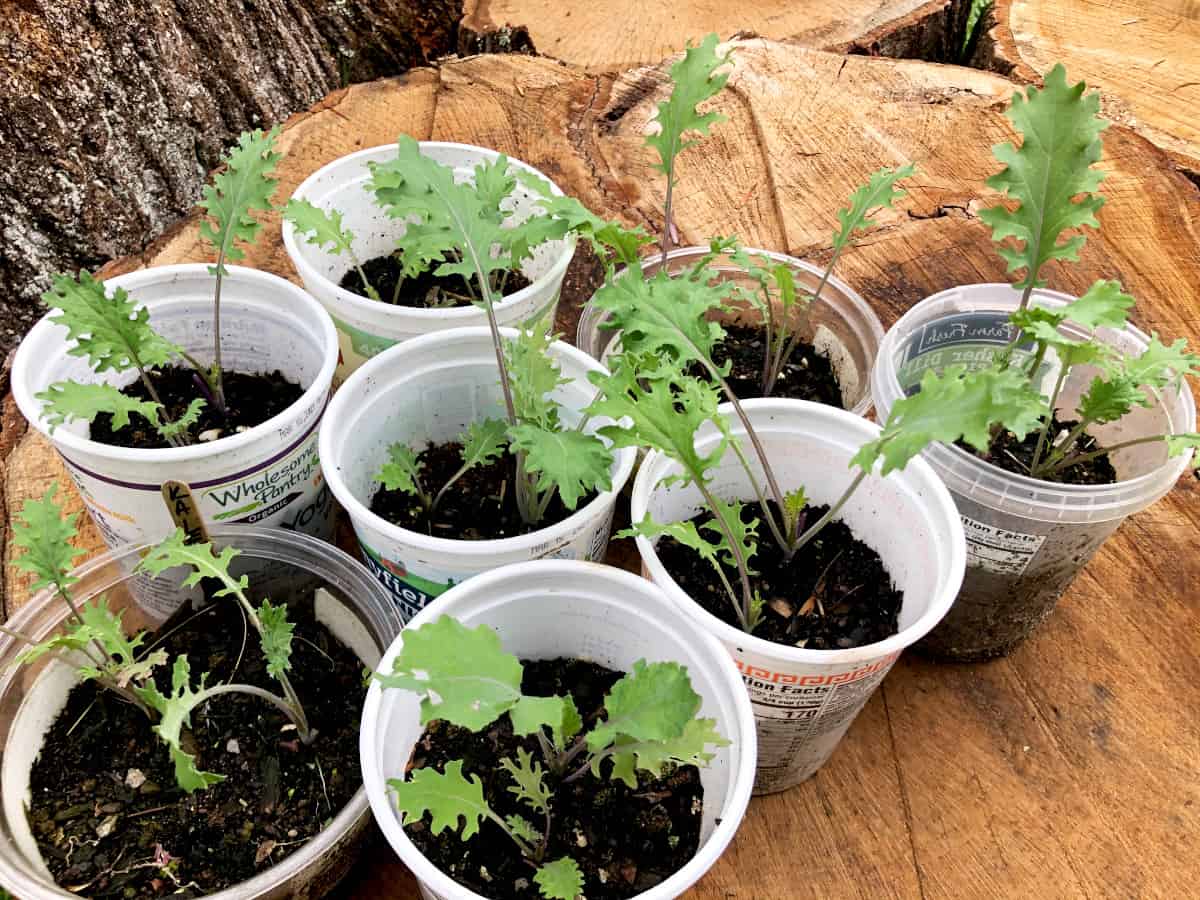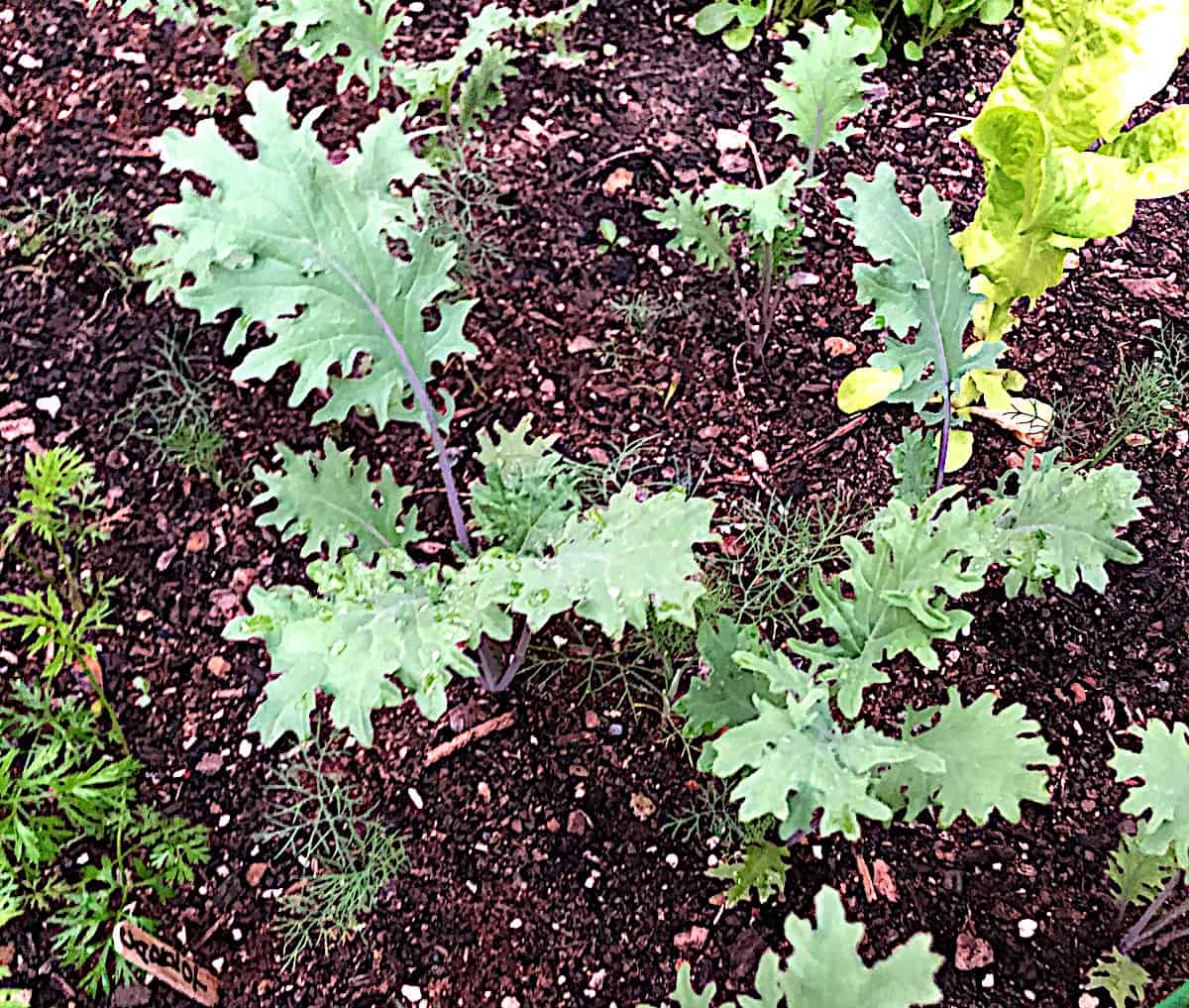Finally, your seedlings are growing, or you have bought some from your local store, and now you might wonder when to plant them in the garden. Every year I can’t wait for the time to plant my seedlings and make my garden look all green. Let me walk you through the process of when and how to plant seedlings.
Seedlings should be planted, or transplanted when they have a second set of true leaves, and were hardened off. Plant the seedlings in a hole as deep as the container they were in. Take your seedling out of the pot along with the soil and place it in the hole. Once your seedling is in the hole, fill the soil around the roots and cover the hole. Gently tamp the soil around the newly planted seedling and water deeply. Some home gardeners like to add organic matter like compost to the bottom of the hole as fertilizer to help seedlings establish better.

When to plant a seedling: How big should the seedling be before planting
The seedlings should be around 3 or 4 inches tall, depending on what plant they are. The best time to plant them is when they developed the second set of true leaves. The first leaves are not true leaves, they are cotyledons and look very different from true leaves. When you see the seedlings have at least 2 sets of true leaves your seedlings are ready to be planted.
How long should the seedlings be in the seedling trays or container
The seedlings should be in the container only as long as the roots of the plant can handle them. The number of roots should be 50% of the soil ratio. When the continuer becomes too small for the roots and they start to circle on the bottom of the container it’s definitely time to plant outside or transplant into a larger container.
The true leaves and roots will tell you when it’s the right time to plant your seedlings. When you see the roots of your seedlings peeking out of the container or seed tray it might be time to plant them outside. It might be that the seedling has outgrown the container and now it feels like you when you put on a whole size smaller shoe. You can gently peek at the roots of the seedlings by gently pulling one of the seedlings out of the seed tray or container, you can use a butter knife to help pluck it out. If you see the roots are 50% and the soil is 50% it’s time to plant it outside before the roots start to circle on the bottom of the container densely and seedlings become rootbound.
Or you can simply observe the seedlings’ growth. When you see the second set of true leaves are out and developed you can plant the seedlings outside.
How to prepare a seedling before planting
There are only three steps to prepare seedlings before planting them outside. The first step is hardening them, the second is feeding them with fertilizer, and the third is keeping them well watered.
Hardening of seedlings is preparing them for outdoor conditions they will face daily once planted outside. Once planted outside, the tender seedlings will face cool weather, inconsistent temperatures, wind, harsher sun, rain, and all the elements that come with the area you are located in. Start hardening the seedlings by placing them outside in a shady spot in the garden for a couple of hours on the first day. Choose a day when there is no danger of rain. The next day increase the time outside by double with some time in the sun as well. Each next day increases their time outdoors and sunshine time as well. Hardening of the seedlings usually takes about a week.
Seedlings can be fertilized when they have the second set of true leaves. They can be fertilized with a liquid fertilizer once a week. Fertilizer is mostly needed when seedlings were started in a sterile seed-mix soil with no fertilizer in it. I however start my seeds in a potting mix with fertilizer in it so don’t need to fertilize my seedlings at all before planting.
Water your seedlings. Check daily to see if the soil your seedlings are in is moist. The soil in which the seedling is growing should be moist, not wet so the seedling doesn’t drown in it and to prevent mold. Keeping the soil moist is important to protect the seedling from stress. If the soil is left to dry out completely the seedling will be stressed and can stop growing, can die, or becomes weak and it will take extra time to recover. Usually, the cells in the seed starting tray are small and once the seedling is established and grows well it needs to be watered quite frequently.
How to prepare the soil for planting seedlings
Choose a location with at least 8 hours of sun. Pull the weeds out if needed and then amend the soil with organic matter such as compost, or aged manure. The soil should be thawed if planning early spring. It should not be muddy or too wet, but workable. Soil should rather hold its shape when squeezed in hand but easy to crumble with fingers.
How to plant seedlings
Seedlings can be planted out when they have the second set of true leaves, they are hardened off, the weather is warm enough and allows for the seedlings to be planted outdoors, and the soil is thawed and warm enough. Seedlings should be planted in a location suitable for the plant. Most vegetable plants like more than 8 hours of sun. Choose a suitable location, and dig a hole slightly deeper than its container depth. Some gardeners like to sprinkle fertilizer directly in the bottom of the hole for an extra boost. Plant the seedling in the hole and cover it with soil. If you plant your new seedlings too deep you risk rotting them. Only vining seedlings such as tomatoes or pumpkins can be planted much deeper than their container depth. Gently tamp the soil.

Seedlings of vining plants such as tomatoes and pumpkins can be planted deeper because they send out roots alongside the whole stem. Just clip the first set of leaves off and plant even one whole depth of the container deep in the hole. Cover with soil and gently tamp the soil.
After your sealing has been planted, water thoroughly. Water will fill also with soil any air pockets left around the roots of your newly planted seedling.
The same planting steps are used when planting the seedlings in an inground garden, raised bed garden, or container garden.
When your garden is not ready for the seedlings to be planted outdoors, you can transplant seedlings in a larger container temporarily. Use at least a double-size container your seedlings are currently in, fill it with the soil, and follow the planting steps mentioned above.
What should a healthy seedling look like
A healthy seedling should look healthy in appearance. It should be at least 3-4 inches tall with a sturdy thick stem and green symmetrical leaves. It should have at least 2 sets of true leaves. Leaves should be green without any sign of distress or disease. It should have no spots or yellow, dry patches on leaves or stem. If you see holes, curling leaves or insect infestation avoid such seedlings or provide them with adequate care. Identification of a healthy seedling is especially important when you buy prepare to buy seedlings. Avoid weak, spindly, legged seedlings, and ones with any signs of disease, stress, or infestation. If you bring an unhealthy seedling into your garden, you are risking infestation of the rest of the garden through soil, wind, and insect.
How to care for a newly planted seedling
Inspect and water the newly planted seedlings periodically. Check for health and pests. Check the leaves’ development and health as well as stem growth and health. If needed you can protect them with frost covers, and mesh covers for pest protection. After two weeks after planting your seedlings can be fertilized as needed.
How to start a vegetable garden

